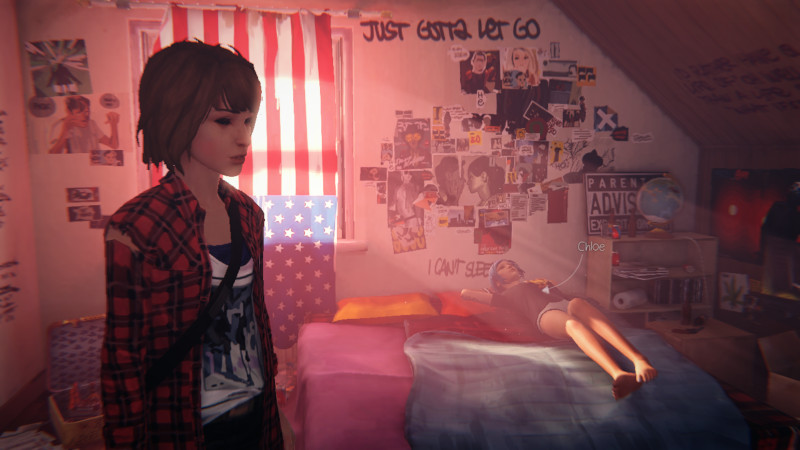Life Is Strange
-
www.wikidata.org/wiki/Q18536861
Online stores Steam - 2015 episodic interactive drama graphic adventure video game
-
lifeisstrange-1606125161027.jpg
Max in Chloe's room. The game lets you explore its rich environments at your own pace, taking in every detail if you want to.Credit: Dontnod Entertainment. Fair use.Source: own screenshotSource data licensing:
Data from Wikidata is available under Creative Commons CC-0.
lib.reviews is only a small part of a larger free culture movement. We are deeply grateful to all who contribute to this movement.Reviews
Please sign in or register to add your own review.
A stop in Arcadia Bay belongs on every adventure gamer's itineraryYou are Maxine “Max” Caulfield. You are 18 years old. You live in Arcadia Bay, a seaside town in the US state of Oregon. You’re a student at a private high school with an arts and science focus. No matter whether you’re at school, at home, or at play, you and your Polaroid camera as inseparable. Perhaps one day your pictures will catch the eye of Mark Jefferson, a famous photographer who teaches at your school?
This is the seemingly ordinary setting of Life is Strange, a narrative adventure game developed by Dontnod Entertainment and published episodically through 2015. The game is played in a third-person 3D view, rendered in an artistic style situated firmly between painterly and photorealistic. While not up to today’s technical standards, the game world is still beautiful and immersive.
Your experience as Max starts with a nightmarish vision of destruction. But it was only a daydream; you’re in school, and Mr. Jefferson is asking you about the technical process that gave rise to the first photographic self-portraits. It’s only after a dramatic encounter with a childhood friend, Chloe Price, that things really get strange. And what is the story behind the disappearance of Chloe’s friend, Rachel Amber?

Max in Chloe’s room. The game lets you explore its rich environments at your own pace, taking in every detail if you want to. (Credit: Dontnod Entertainment. Fair use.)In terms of gameplay, Life is Strange has much in common with classic point-and-click adventure games: You spend a lot of your time exploring, talking to other characters, and solving small puzzles. There’s no unlimited inventory—occasionally a puzzle may involve finding an object and carrying it from one location to another. There is one additional game mechanic (spoilers ahead):
Warning: The text below contains spoilers.
You discover early in the game that you have a limited ability to reverse the flow of time. This often allows you to try different decision paths and compare outcomes. It makes for a world that feels real and responsive (decisions have consequences) without painting you into a corner.
The game is fully voiced, and it’s a joy to poke at objects in the environment and listen to Max reflect on what she sees in the world around her. If you sit down on a bench, you may be rewarded with some additional wide angle camera views and narration. If you prefer to rush through the story, you can do that, too.
Life is Strange is not a perfect game (some scenes overstay their welcome, for example), but I still consider it a masterpiece in interactive storytelling. It’s a joy to explore Arcadia Bay, thanks to the excellent art direction and attention to detail. The wonderful chemistry between Max and Chloe invests the player in both characters.
The first episode of the game is available for free, and you can often pick the whole game up for under $5. Thanks to Feral Interactive, there is an excellent Linux port, as well. If your computer is not a potato and you enjoy narrative adventure games, Life is Strange is one title you won’t want to miss.
